Resarch Updates
Small Unmanned Aerial Vehicle (SUAV) Imagery
Data from high spatial resolution multispectral imaging has many benefits:
- Potential to identify pests, disease and weed infestations
- Monitor herbicide application, herbicide drift, and effectiveness of cultivation practices
- Provide data on soil fertility and refine fertilization by detecting nutrient deficiencies
- Help with land management: whether to take ground in or out of production or rotate crops
- Count plants and determine population or spacing issues
- Estimate crop yield
- Control crop irrigation by identifying areas where water stress is suspected
SUAV (drone)‐collected images over an experimental field planted with summer and fall cover crops at the Lincoln University Busby Organic esearch farm (Jefferson City, MO). A= hairy vetch + cereal rye; B= White Clover + Cowpeas; C=Hairy vetch + cereal rye; D= Three rows planted with tillage radish, at four different stages of development; E= Sorghum Sudan grass cover crop area – cover crop was frost‐killed
before 12‐06‐2019. One research objective of the project will evaluate termination methods for cover crops involving frost‐killed, spring terminated, and living mulch in no‐till systems. Over a 3‐year period, treatment effects on soil health, arthropod communities, weed suppression / weed seed predation, incidence of soil‐borne and foliar diseases, and yield of summer squash and beet crops will be evaluated. The SUAV data will assist in this investigations.
Top images: True Color (Red, Green, Blue) taken by DJI Zenmuse X5 Camera; Bottom Images: NDVI generated from Micasense Multispectral Camera.
Cover Crop Mixture Experiments
We are testing four different cover crop mixtures, evaluating different termination methods, and measuring their effects on weed suppression and yields of several direct-seeded and transplanted vegetable crops. See the Cover Crops page for more detailed descriptions of the cover crop experiments.
August 2018 Field Preparation

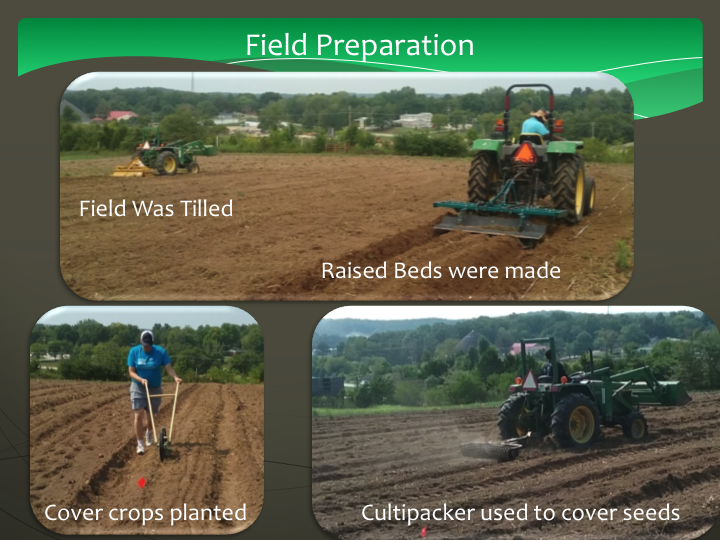
Year 1 Results
Hairy Vetch-Cereal Rye-Tillage Radish Cover Crop
The picture below shows fall growth of vetch and tillage radish. The radishes were killed in the fall--in the center photo, you can see brown radishes and green rye. In the spring growth, you can see the "tunnel" left by the fall radishes.
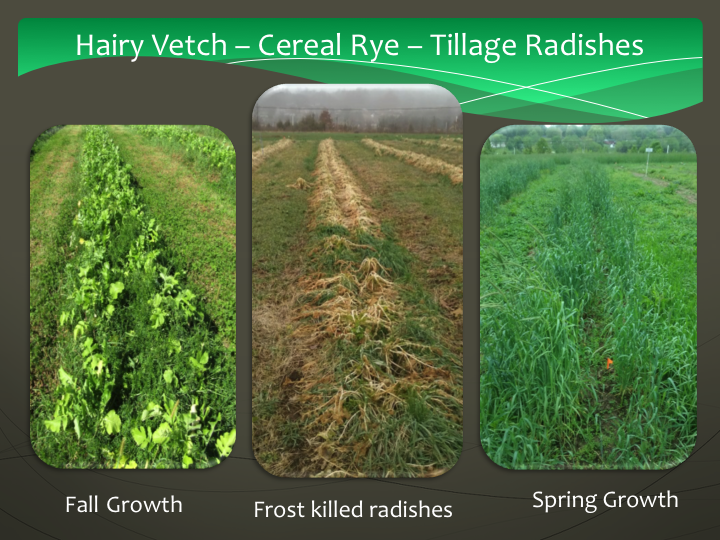
Different no-till termination methods were evaluated: occultation with black plastic, roller crimper, flail mower, sickle bar mower, and rotary mower.
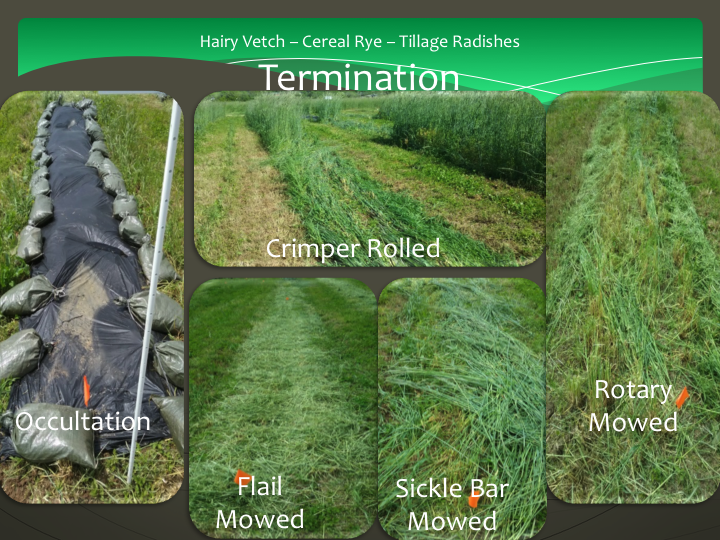
The next slide shows the beds 3 weeks after termination, and the level of weeds after different termination methods in transplanted summer squash.
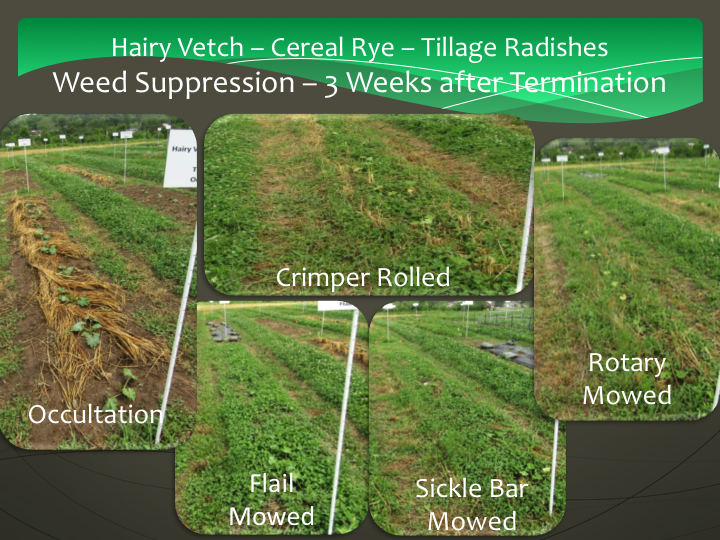
In Year 1, the highest yield was obtained with the no-till occultation treatment, which resulted in minimal weeds, and the second highest yield was obtained using the control with the black plastic with a cover crop that was harrowed.
White Clover Living Mulch and Tillage Radish
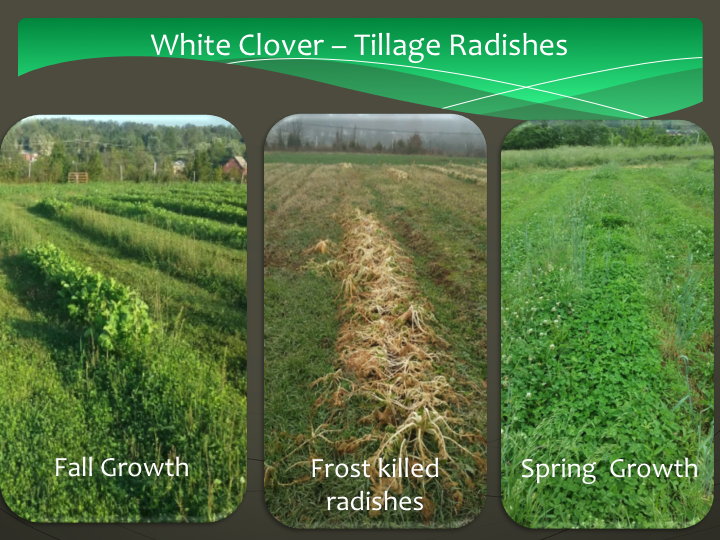
In year 1, the highest yield of summer squash was obtained from the control treatment with black plastic after the cover crop was harrowed, and the second highest yield was obtained using the control with black plastic with no cover crop.
Sorghum-Sudangrass and Cowpeas
Sorghum-sudangrass gets tall, and if there are strong winds, it blows all over the place! The spring growth is not the sorghum-sudangrass or cowpeas--it's weeds!
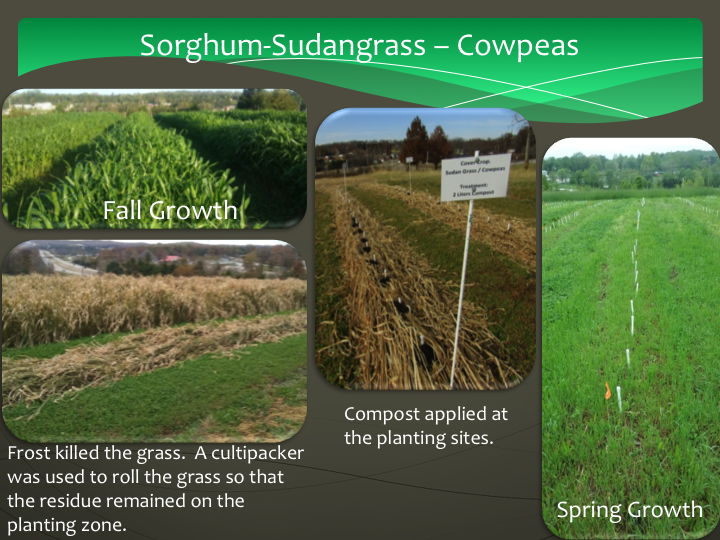
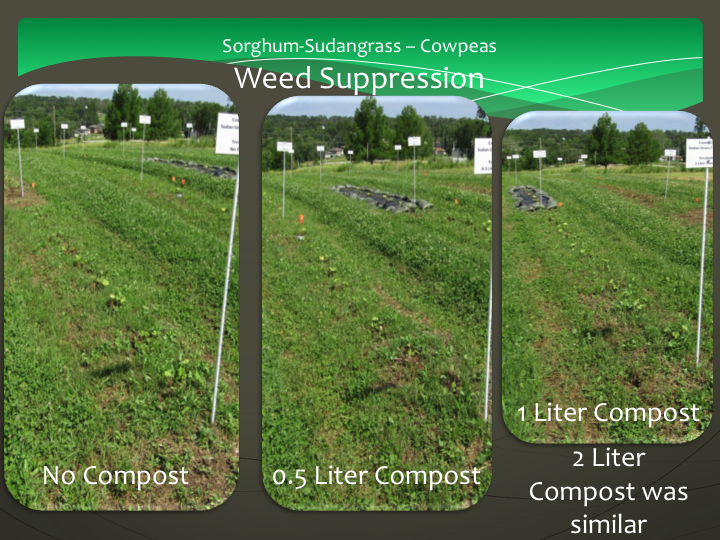
In Year 1, the highest yield of summer squash was obtained from the control treatment with black plastic with the cover crop. The second highest yield was obtained from the control treatment with black plastic with no cover crop. Compost was applied in the planting holes but did not contribute to weed suppression.
Tillage Radish
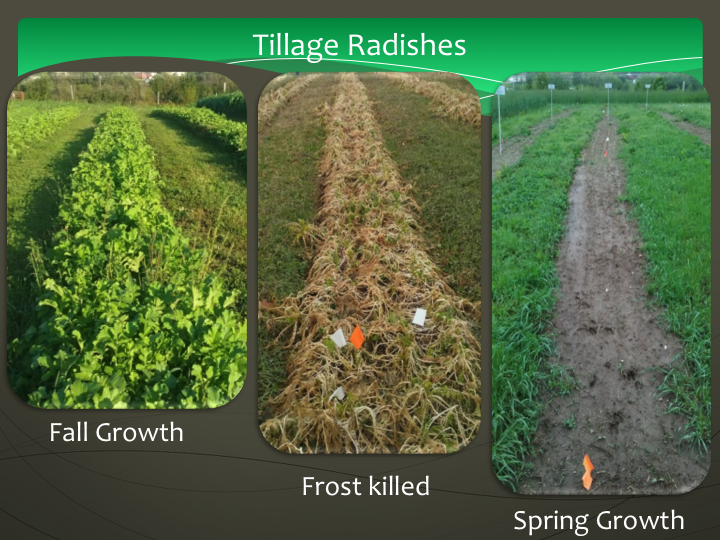
In year 1, the highest yield of beets was obtained with the tilled, direct seeded treatment, which resulted in minimal weeds.
Funding

This project was funded by the Organic Research and Extension Initiative (OREI), part of the USDA National Institute of Food and Agriculture, Grant Number 2017-51300-26810.
